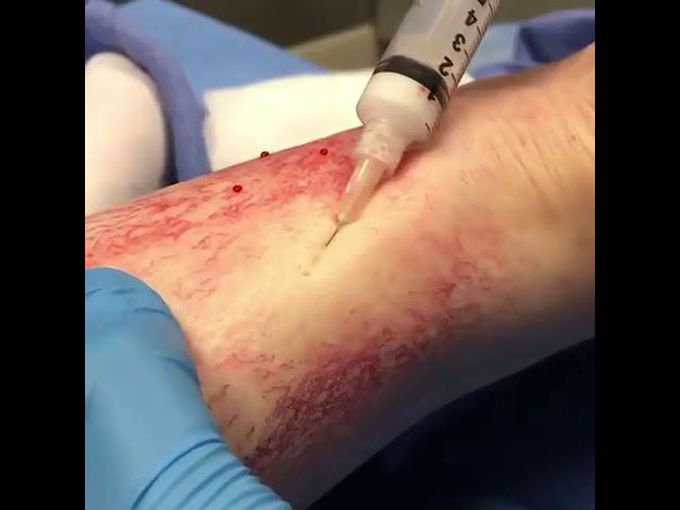


Spider veins (telangiectasias): treatment
This is oddly satisfying! A network of spider veins (telangiectasias) being completely faded! Sclerotherapy effectively treats varicose and spider veins and is considered the treatment of choice for small varicose veins It involves injecting a chemical solution, the sclerosant, directly into the vein to entirely collapse, scar, and obliterate it, forcing blood to reroute through healthier veins. The collapsed vein is reabsorbed into local tissue and eventually fades. It is commonly mixed with air to make a foam like substance that tend to stay in the vessel more firmly. The sclerosant damages the innermost lining of the vessel, resulting in a clot that blocks the blood circulation in the vein. To prevent back-flow, most veins have valves that only allow blood only to flow in the direction of the heart. When these valves become incompetent, veins become enlarged and bulging (varicose). Smaller veins that feed these varicose veins can also become enlarged and appear as red or blue spider veins in the skin. Spider veins (or telangiectasias) are clusters of tiny blood vessels that develop close to the surface of the skin and can twist and turn. They can be red, blue, or purple, and have the appearance of a spiderweb. Varicose veins are bigger and found deeper. They can lead to a chronic swelling condition of the leg called venous insufficiency, which predisposes a person to blood clots (thrombosis) and skin ulceration. The destruction of these types of veins can be desirable both medically and cosmetically, but also used to improve symptoms such as aching, swelling, burning, and night cramps. Video by @veintreatmentcenter

